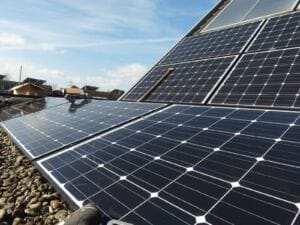Electricity prices in Canberra are a critical component of the region’s economy, influencing everything from household budgets to the operations of large businesses. In recent years, residents and businesses have witnessed shifts in electricity pricing, underscoring the necessity for both consumers and enterprises to understand the underlying causes of these changes. This understanding enables better decision-making with respect to energy consumption and financial planning. The aim of this article is to explore the factors that influence electricity costs in Canberra, providing insight into the complexities of the local energy market.
HEALTH NEWS: The 5 best hospitals in Arizona, according to U.S. News & World Report
Key Factors Influencing Electricity Prices in Canberra
Electricity prices in Canberra are shaped by a blend of interrelated elements. First and foremost, the basic economic principle of supply and demand plays a significant role. During periods of high demand, such as hot summers when air conditioning units run constantly, prices can rise sharply due to the increased strain on the grid. Conversely, demand may drop in cooler months, potentially leading to lower prices. These fluctuations are compounded by the availability of supply, which can be influenced by plant outages, maintenance schedules, or unforeseen issues in the energy production chain.
Another crucial consideration is what affects electricity costs in Canberra, including government policies, energy market regulations, and investment in renewable infrastructure. Policies aimed at reducing carbon emissions can lead to changes in the energy mix, often favouring renewables over traditional fossil fuels. While these shifts contribute to long-term sustainability, they can also introduce short-term price volatility as the market adapts. Additionally, factors like wholesale energy prices, transmission costs, and retailer pricing strategies all play a role in determining what consumers ultimately pay on their electricity bills.
Natural resources and the methods by which they are harnessed for energy production have a direct impact on costs. Canberra sources its electricity from a combination of coal, gas, and increasingly, renewables such as wind and solar power. The volatility of raw material prices, coupled with the operational costs associated with different energy production methods, is reflected in consumer electricity bills. Furthermore, energy production facilities depend on natural conditions; for instance, hydroelectric power requires consistent rainfall levels to maintain optimal output.
Seasonal variations introduce another layer of complexity into the pricing equation. As mentioned earlier, demand typically spikes in summer. However, supply-side factors like the availability of solar energy can also vary seasonally. A sunny, long summer can uptick solar power contributions, potentially easing supply constraints and lowering costs. Seasonal maintenance and availability of hydropower in autumn and spring due to rainfall levels also influence prices.
The Role of Renewable Energy in Canberra’s Electricity Market
In recent years, Canberra’s electricity market has seen a marked shift towards renewable energy sources. Solar and wind power are at the forefront of this transition, driven by both environmental concerns and economic factors. Solar power, in particular, has witnessed significant uptake due to its decreasing costs and increased efficiency. The abundance of sunlight makes solar a highly feasible option for Canberra residents, and the government’s commitment to renewable energy targets ensures ongoing support for its expansion.
Wind power also contributes to the energy mix, with several wind farms located within and around the Australian Capital Territory. These farms generate substantial electricity, contributing not only to the local grid but also stabilising prices by providing a reliable supply source independent of fossil fuel market volatility.
Government incentives play a vital role in promoting the adoption of renewable energy. Rebates, subsidies, and tax incentives make it more attractive for consumers and businesses to invest in solar panels and other green technologies. These programs not only drive renewable expansion but also catalyse economic benefits, such as job creation in the renewables sector, and potential reductions in electricity costs over time.
Looking ahead, the trajectory of renewables in Canberra appears promising. Continued advances in technology could result in further declines in the cost of solar and wind energy production. Combined with government support, these factors hint at a future where renewables significantly buffer against price volatility, ensuring more stability and potentially lower consumer electricity expenses.
Economic Consequences of Electricity Price Fluctuations
Electricity fluctuation can have a profound economic impact, particularly on residential energy bills. Sudden price increases can strain household budgets, forcing families to re-evaluate their spending on essential and discretionary items. These fluctuations can be particularly challenging for those on fixed incomes or with limited financial flexibility.
Local businesses, especially those in energy-intensive industries like manufacturing, are also affected. Higher electricity costs can swell operational expenses, which may then be passed on to consumers through increased prices for goods and services. In extreme cases, sustained high energy costs could impair business competitiveness or even threaten viability.
The long-term economic implications for Canberra are significant. Energy costs impact everything from household affordability and consumer spending to overall economic growth. Over time, consistently high electricity prices could deter new businesses from establishing themselves in the region, stalling job creation and economic development.
Consumers and businesses can adopt several strategies to mitigate these impacts. Households can invest in energy-efficient appliances, while businesses may explore modifications in their operational practices to increase efficiencies. Implementing energy-saving technologies or participating in demand-response programs helps reduce peak load demands, which, in turn, stabilise costs.
Comparing Canberra’s Electricity Prices with Other Regions
When comparing electricity prices in Canberra with those of other Australian cities, several differences emerge. Various factors contribute to these disparities, including regional resource availability, infrastructure capacity, and policy frameworks. For instance, states like Queensland and Western Australia enjoy low-cost energy from abundant natural gas and coal resources. In contrast, regions relying heavily on imported energy may experience higher prices.
National energy policies also influence regional electricity pricing. For example, uniform carbon pricing can affect regions differently based on their energy mix and carbon intensity. These policies are designed to incentivise cleaner energy use, but they can also lead to short-term price adjustments across the board.
By examining energy market trends in other regions, valuable lessons can be drawn that are relevant to Canberra. States proactively investing in renewable energy infrastructure often see a reduction in cost volatility over time. Enhanced energy storage solutions, for example, can help overcome the intermittent nature of renewable sources, ensuring a consistent energy supply during peak periods and thus moderating prices.
How Consumers Can Adapt to Changing Electricity Prices
Adapting to changing electricity prices requires consumers to be proactive and informed. One practical approach is reducing household electricity consumption. Simple behavioural changes, such as turning off unused appliances, maximising natural light, and reducing water heater usage, can lead to significant savings.
Modern technology also offers promising solutions. Smart meters allow consumers to monitor their energy usage in real-time, enabling them to identify inefficiencies and cut back accordingly. Furthermore, investing in energy-efficient appliances can substantially reduce electricity consumption, as these products are designed to operate with minimal energy input while delivering optimal performance.
Understanding the benefits of different tariff structures, like time-of-use pricing, can also help manage electricity costs. By using electricity during off-peak times, consumers may capitalise on lower rates. Moreover, exploring the resources and programs available locally can provide substantial support in energy savings efforts.
For those in Canberra, there are numerous government and community initiatives aimed at encouraging energy efficiency. These programs often provide information, rebates, and other resources to assist both residents and businesses in effectively cutting their electricity use and costs.
Conclusion
In summary, several factors collectively impact the fluctuation of electricity prices in Canberra. From supply and demand dynamics and government regulations to the growing role of renewable energy, each plays a part in the complex web influencing pricing. The consequences of these fluctuations are felt across households and businesses alike, highlighting the importance of staying informed and adaptable.
As Canberra continues to embrace renewable energy and adopt advanced technologies, there is potential for a more stable electricity market that benefits all stakeholders. By engaging with community and government initiatives and leveraging the resources and strategies available, consumers can effectively navigate the ever-evolving energy landscape. This proactive approach helps manage electricity costs today and lays the groundwork for a sustainable and economically robust future.



